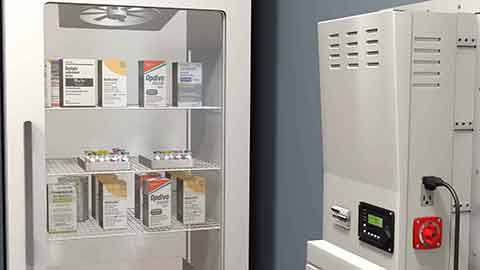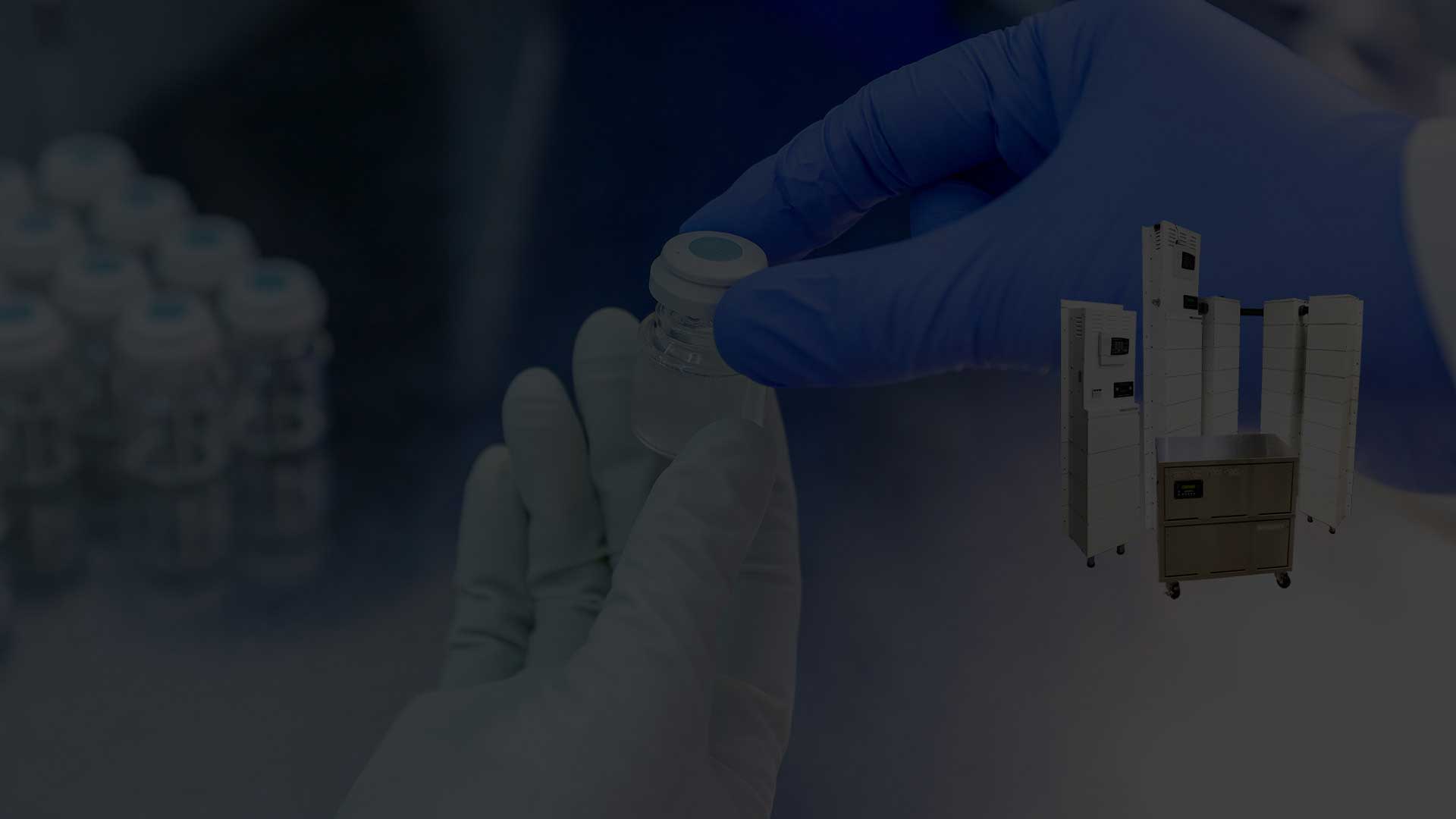Liquid Nitrogen Freezer or Dry Ice for Vaccine Storage?
Almost two years into the coronavirus pandemic, over 10 Billion doses of the various COVID-19 vaccines have been manufactured, delivered and administered across the globe. In the United States 2 of the 3 major COVID-19 vaccines (Pfizer-BioNTech, brand name Comirnaty and Moderna, brand name Spikevax) require storage conditions much more extreme than most of our previously developed, non-COVID vaccines.
According to the US Centers for Disease Control and Prevention (CDC), Moderna’s storage temperature requirement includes temperatures ranging from -50°C and -15°C (-58°F and 5°F). For the Pfizer-BioNTech vaccine, it may be stored from -90°C to -60°C (-130°F and -76°F).
As we’ve covered in a previous blog post, the MMR(b), MMRV(b) and Varicella(b) Vaccines are stored at a temperature range of -50°C to-15°C (-58°F to -5°F), which is identical to the Moderna vaccine.
These very specific, very specialized temperatures require the use of extraordinary measures to make sure the vaccines maintain maximum efficacy. When deciding on ultra-low temperature storage options, two of the most commercially available and time-tested solutions that exist are dry ice storage and liquid nitrogen freezers.
What is Dry Ice?
While it may make you think of the ice you’d use to keep your water nice and cold, dry ice is not a water-based compound. In fact, dry ice is the solid form of carbon dioxide (CO2), which in this frozen state has an approximate temperature of -78.3°C(-109°F).
Beyond the extreme cold, dry ice is a go-to storage solution for vaccines due to its unique chemical characteristics. Unlike many solid compounds (like regular ice, for example), as dry ice begins to warm instead of melting into a liquid it instead transitions directly into a gas in a process called sublimation.
This property makes dry ice an attractive option as all that’s needed to properly dispose of it is proper ventilation of the container or area it is being kept, avoiding the creation of a potentially dangerous low oxygen environment.
Proper ventilation is also needed in the case of using dry ice in an enclosed container, or else you run the risk of creating a pressurized environment as it sublimates which creates the potential for an explosion to occur. Equipment such as gloves are needed when handling dry ice to prevent cold burns.
What is Liquid Nitrogen?
As the name suggests, liquid nitrogen is the liquid form of nitrogen (LN2) which at room temperature exists as a gas, but in its liquid form is -195.79°C (-320°F). Originally, the only available options were to store whatever materials needed freezing directly in the liquid phase nitrogen.
However, in the modern age cryogenic freezers are readily available, allowing for far more stable and customized temperatures. This is achieved by using the vaporized nitrogen to cool the intended materials at less intense sub-zero temperatures.
Like dry ice, cryogenic storage requires proper ventilation to avoid creating an oxygen deficient environment. Additionally, proper protective equipment like insulated gloves are needed to avoid serious burns or bodily harm if exposed to the liquid nitrogen during handling or from splashing.
Is LN2 or Dry Ice better for COVID-19 Vaccine Storage?
As mentioned before, the Moderna, MMR and Varicella vaccines are stored at temperatures ranging from -50°C and -15°C (-58°F and 5°F). The Pfizer-BioNTech vaccine must be stored from -90°C to -60°C (-130°F and -76°F). In this regard, both dry ice and LN2 are theoretically very capable for vaccine storage. However, per CDC recommendation dry ice should be used on a temporary basis only, and not at all if possible.
While it is used frequently in the transport of vaccines, the thermal shipping containers that vaccines arrive in, which use dry ice, require “significant support to store vaccine at proper temperatures, including trained staff, a regular supply of dry ice, and standard operating procedures for regular maintenance.”
With the dry ice needing to be added ~every 5 days, per there recommendation, this may not be a viable or easy option. In locales with more difficult supply chain access such as Hawaii or Alaska, the CDC states that dry ice storage in the temporary shipping containers is more acceptable.
Direct LN2 storage is not recommended as its temperature (-195.79°C) far exceeds the temperature range, but vapor stage LN2 freezers provide a viable ultra-low temperature solution for long-term storage.
For example, the Pfizer-BioNTech vaccine is good for 9 months from the date of manufacture when stored at ultra-low temperatures for the bulk of that duration. When looking for a vaccine freezer solution that meets the CDC’s criteria for proper storage of vaccines, look out for equipment that meets NSF456 vaccine storage standards.
Developed in concert with the CDC and the National Standards Foundation, it allows you to be confident that the freezer/refrigerator in question will meets your needs in regard to the proper storage of your vaccine stock.
Additionally, while minimizing your exposure to loss of vaccines by properly freezing them, we at Medi-Products recommend one of our many lines of battery backup units to make sure your precious vaccine reserve is protected in the case of a power outage. A battery-based backup unit provides instant power, for as long as you need it, ensuring that you do not need to throw out any vials and that their efficacy remains uncompromised.
Here's what you should also read:
How to prepare for a medical refrigerator power outage
The "Cold Chain" - What is it?
Vaccine Storage and Handling During a Power Outage


